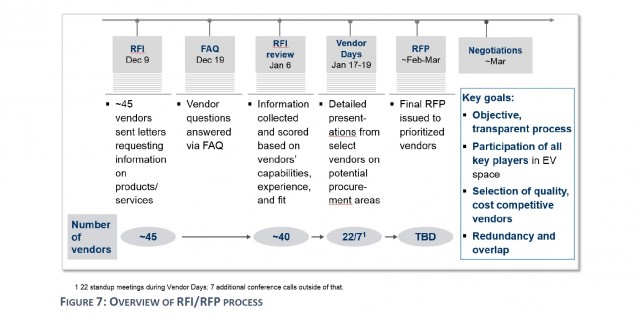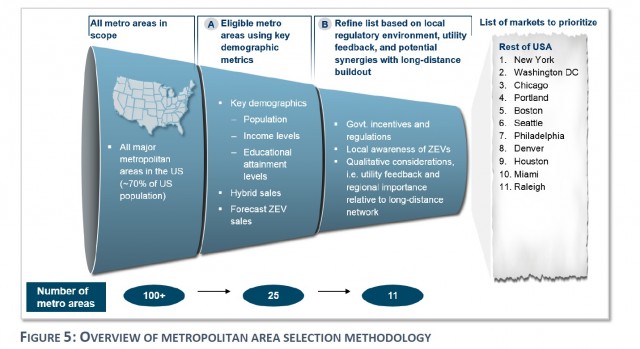Mark 2018 as the year that practical, widespread electric-car charging really started coming to America.
We’ve had a lot of news about new charging networks coming to the U.S., and the news doesn’t look like it will be slowing down any time soon.
Following the announcement last week that 100 Walmart stores would get electric car fast chargers, Electrify America has announced that it will install 2,000 additional fast-charging stations at 484 locations across the country.
The locations will include Target and Alltown stores, Casey’s General Stores, Sheetz gas stations and travel centers, as well as shopping centers owned by real-estate conglomerates Brixmor and Kimco.
Electrify America is building a network to rival Tesla Superchargers that will serve electric cars from all the other automakers. It will give them the same ability to drive across the country that Tesla drivers already enjoy.
The chargers are coming now, thanks to Volkswagen’s settlement with the government over its diesel emissions scandal.

Detail from first of four phases of VW ‘Electrify America’ zero-emission vehicle infrastructure plan
Under a consent decree with the EPA and California, the company agreed to spend $2 billion over 10 years to build a nationwide charging network for electric cars. Electrify America was formed to spend that money and build out the network.
The consent decree stipulates that the chargers have to be compatible with and accessible to electric cars made by any automaker.
This latest announcement, along with the Walmart release last week, constitute the bulk of the first $500 million phase of that rollout.
READ THIS: Really fast electric-car charging stations coming to a Walmart near you
We spoke with Electrify America’s chief operating officer Brendon Jones to get a get more detail on what the new network will look like, and whether to expect the kind of convenience that Superchargers now offer. In short, we came away impressed.
In accordance with the consent decree, the new network will roll out in phases, much like the Supercharger network did in the beginning. The goal of the first phase is to expand electric car access to major travel corridors and within 17 metro areas across the country. These are mainly, but not entirely, in coastal cities.
At the end of the first $500 million investment phase, Electrify America also expects to have chargers spaced at approximately 80 mile intervals along two major cross country routes. Other cities and other routes will follow until the network is completed nationwide at the end of Phase 4. Each construction phase is expected to last about two years, making the rollout a little slower than Tesla’s, but just as comprehensive.

Detail from first of four phases of VW ‘Electrify America’ zero-emission vehicle infrastructure plan
The new chargers will be grouped into three types of installations: along highways, within major cities, and throughout the suburbs around those cities.
The 300 highway charging stations will include between four and 10 fast chargers each, with at least two 350-kw chargers and the rest made up of 150-kw chargers that will be upgradeable later to 350 kw. A 150-kw charger can recharge about 225 miles in a half hour. A 350-kw charger can refill a little more than that in 15 minutes. The stations will be an average of 77 miles apart but may have a maximum distance of 120 miles. Most will be right off the highway, or within a mile, though the absolute limit is two miles off the highway.
Stations within cities, called Metro Stations, will have three 50-kw fast chargers which can be upgraded to 150 kw, along with one Level 2 charger for plug-in hybrids or electric cars that don’t have fast-charge ports.
Metro hubs, the charging stations on the outskirts of the 17 metro areas, will provide six 150-kw fast chargers in areas with shopping centers or access to several major highways. They will not have Level 2 chargers.
